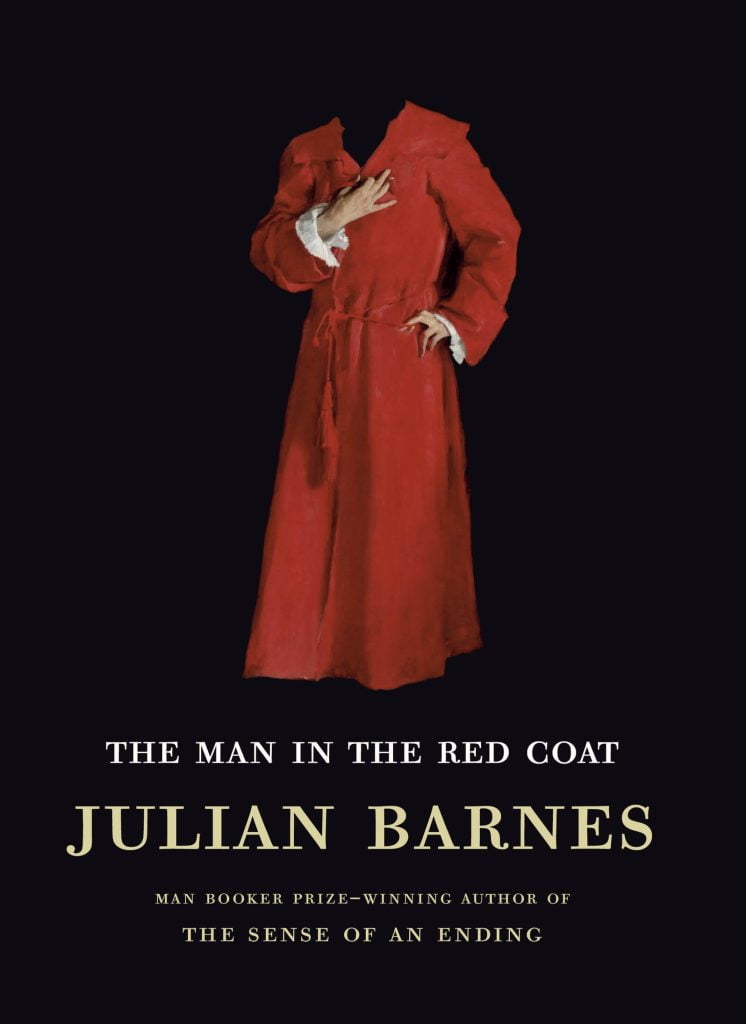
Prepare to be transported to the glitz and glamor of late 19th century Paris in “The Man in the Red Coat,” a biography that follows the unconventional life of Samuel Pozzi, a surgeon, socialite, and all-around badass who left an indelible mark on history.
“Every portrait that is painted with feeling is a portrait of the artist, not the sitter. The sitter is merely the accident, the occasion. It is not he who is revealed by the painter; it is rather the painter who, on coloured canvas, reveals himself.”
― Julian Barnes, The Man in the Red Coat
Greetings, book lovers! Today we’re diving into the world of Julian Barnes’ “The Man in the Red Coat,” a historical nonfiction work that’s as entertaining as it is informative. And trust me, it’s no stuffy academic text – there’s plenty of humor, wit, and scandal to go around.
“The Man in the Red Coat” follows the story of a fascinating real-life figure, Dr. Samuel Pozzi, who was a gynecologist, surgeon, and general bon vivant in 19th-century Paris. This dapper gentleman was known for his impeccable fashion sense (hence the red coat) and his impressive social circle, which included luminaries like Oscar Wilde and Sarah Bernhardt.
The book is a delightful blend of erudite and irreverent. Barnes’ writing style is a novelistic take on history with a dash of humor that keeps the reader engaged and entertained.

Pozzi was born into a relatively humble family but used his intelligence and ambition to climb the social ladder. As Barnes notes, “In a society where wealth and rank were still largely hereditary, he was a self-made man, a class traitor.” He pioneered new techniques for gynecological surgery, wrote textbooks on anatomy and physiology, and even performed life-saving surgery on King Edward VII. In other words, the man was a total boss.
However, despite his successes, Pozzi was never fully accepted by the upper echelons of society. He remained a bit of an outsider, a maverick who didn’t quite fit in with the stuffy conventions of his time.
One of the most interesting aspects of the book is the way it highlights the class tensions of the era. Pozzi’s life is a window into a world that was simultaneously glamorous and grotesque. It’s a theme that will resonate with anyone who’s ever felt like they didn’t belong.
The book is also a commentary on the excesses of the Belle Epoque, and Barnes isn’t afraid to poke fun at the pretensions of the upper classes.
Reception and Criticism of the Book
“The Man in the Red Coat” has drawn some criticism for its occasional lapses into name-dropping and over indulgence in detail. But in my opinion, those moments are part of what makes the book so enjoyable.
The book has been praised for its ability to draw the reader into the world of 19th-century Paris and for its entertaining writing style.
One of the most fascinating aspects of “The Man in the Red Coat” is the social circle that Pozzi moved in. Barnes does an excellent job of painting a picture of Parisian high society in the late 19th century, and it’s clear that Pozzi was at the center of it all. But what’s the significance of this?
For one, Pozzi’s connections gave him access to influential people and resources that allowed him to advance his medical career. It’s also clear that his social life was an important part of his identity – he loved entertaining and being entertained, and his salon was a gathering place for some of the most interesting and creative minds of the time.
But perhaps most importantly, Pozzi’s social circle was a reflection of his unconventional nature. He didn’t fit in with the stuffy, conservative world of the upper classes, but he found a kindred spirit in the artists, writers, and bohemians who were pushing the boundaries of society. In this way, his social circle was a way of expressing his own identity and values.
“The Man in the Red Coat” is a book that’s sure to leave a lasting impression on readers. But what’s its legacy? What impact has it had on the literary and historical world?
For one, the book has been praised for its unique blend of history and storytelling. Barnes’ writing style is accessible and engaging, making it an enjoyable read for both casual readers and history buffs alike. The book has also received critical acclaim, winning the Duff Cooper Prize and being shortlisted for the Baillie Gifford Prize.
But perhaps more importantly, “The Man in the Red Coat” is a reminder of the importance of individuality and nonconformity. Pozzi was a man who refused to be defined by the conventions of his time, and in doing so he made a significant contribution to the world of medicine and society at large. In a world that often values conformity over creativity, his story is a valuable reminder of the power of individuality.
“The Man in the Red Coat” is not just any book, it’s a hip-shaking, soul-stirring, mind-bending journey through the glitz and glam of Parisian high society. It’s a book that will make you laugh, cry, and gasp in amazement at the sheer audacity of its subject, the irrepressible Samuel Pozzi.
But it’s also a book with a message – a message that says, “Hey, you don’t have to be like everyone else. You can blaze your own trail, stand out from the crowd, and make a difference in the world.” And isn’t that a message we could all use a little more of these days?
So, whether you’re a lover of history, a fan of biographies, or just looking for a good read, “The Man in the Red Coat” is the book for you. It’s a rollercoaster ride through the past, a tribute to the power of individuality, and a reminder that sometimes, the most interesting people are the ones who refuse to conform.